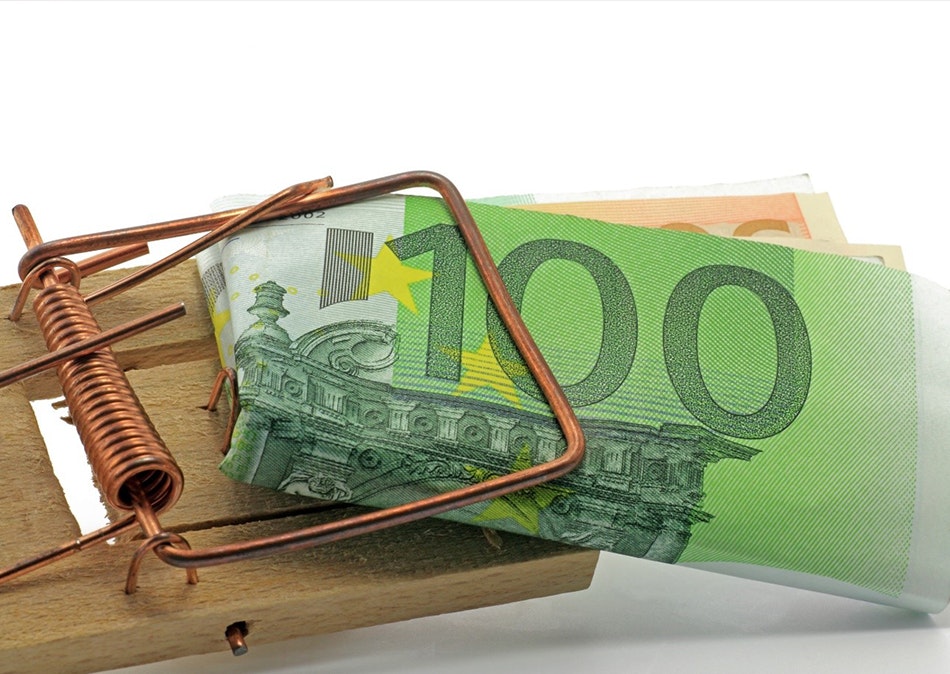Insights
High yield shares don’t always make a good long-term investment

Don’t make the mistake of buying shares on yield alone
Don’t get caught in a short term high yield investment trap for the long term.
It’s easy to become caught up in fads, or generally accepted behaviour. Everyone does it. Kids have marbles, trading cards and lately, fidget spinners. Investment styles go in and out of fashion too. And it’s true, as the market moves and changes, certain investment methods or sectors do generate better results. These opportunities are possibly short term, but definitely compelling to investors seeking to maximise financial prosperity.
Retirees (often guided by financial advisers) are traditionally known for seeking out high yielding shares, that is, those paying a higher dividend. As retirees need income, they consider yield as a crucial decision-making factor. The problem is, when yields are considered more important than capital growth, investors may find themselves overlooking some excellent investment opportunities. Or they risk investing in companies where high yields mask a falling share price.
The problem is, when yields are considered more important than capital growth, investors may find themselves overlooking some excellent investment opportunities.
Consider capital growth and yield together
Marcus Padley, writing for the Sydney Morning Herald in 2011 says the performance of high yielding stocks is seldom higher than those with lower yields. Capital growth on the other hand, is often stronger on shares with lower yields1.
In an ASX Investor update article in 2012 Russell Investments senior portfolio manager Scott Bennett tracked the movement of low yielding BHP shares alongside the relatively higher yielding Telstra over the 10 years from 2002 – 2012. He found that BHP’s dividend was $0.19 in 2002 and $1.10 in 2012. In 2002 Telstra’s dividend was $0.22 and by 2012 it was just $0.28. A parcel of Telstra shares costing $10,000 in 2002 was worth $10,953 in 2012. While a similar parcel of BHP shares was worth $50,440 in 2012.
This is interesting, and shows from 2002 to 2012 BHP was definitely a better investment than Telstra. What happened to BHP and its compelling high yields between 2013 and 2016? More on this later.
Can the company support its yield promise?
Stocks offering high dividends risk not having the cash flow to fund them. Scott Bennett warns that investors should beware of high yielding shares. A company promising big dividends must be able to fund them over the long term2. Paying large dividends commits a company to paying out profits which might be better off reinvested (if capital growth is the ultimate goal).
Retirees traditionally seek high yield as an income-generating factor over capital growth because they’re looking for cash flow to fund their retirement. But the truth is, overall wealth is just as important as income. Your money needs to last for a decent retirement term, up to thirty years in some cases. Capital growth must be considered because your investments must be large enough to continue funding your income as long as you need it.
For anyone with a long-term view, potential capital growth is significant, because strong capital growth will help fund higher dividends in the long run.
Look at the whole company, not just yield in isolation
High yield could be masking high risk, according to Emily Perryman, writing for Shares Magazine UK in 2016. Yields are calculated by dividing dividend-per-share by the stock’s share price and multiplying by 100. She warns, that if the dividend remains the same but the share price drops, the yield will increase3. This could give a false impression of great yields when in fact, the company is in trouble or trouble is on its way. Often dividend adjustments follow quickly and yield adjusts to a more reasonable figure.
Back to BHP
In February 2016, BHP’s share price was hovering around $21. It had been dropping steadily over a year or more, down from around $70 in 2013 (data: from Yahoo Finance). But dividends were still $1.24 in September 2015. This would have made yields look fabulous. BHP finally had a significant drop in dividend in March 2016 to 0.32c. Up until this point, an investor looking only at yields would have thought it an excellent opportunity and been misled as to the overall health of the company itself.
Watch for market volatility
Income is only one element of share ownership. You’re still exposed to the share price volatility. Bennett says dividends often remain stable during times of volatility. But an investor can’t benefit from dividends without being vulnerable to the share price2. If the share value is volatile, the entire portfolio is subject to this. A whole portfolio based on yields may not cover enough industries and sectors to protect against volatility. Investors must thoroughly consider each share they invest in or risk failing to diversity their portfolio enough to see them through tougher times.
Yields are just one part of your investment decision
We’re not saying you should ignore yields entirely when you’re investing for retirement. However, yields are only one element influencing a share’s value. Factors like capital growth, share price volatility and other company information should be considered in conjunction with dividend yields. Your financial advisor can help you make smart share purchasing decisions, taking into account a range of attributes of each stock to help you invest in shares with the best potential for funding your long and prosperous retirement.
Have you been caught out by focusing too much on yield when investing in shares? Need help making good share purchase decisions? Contact Modoras on 1300 888 803.
Some articles which may interest you:
Sources:
- SMH, Feb 2011, Marcus Padley: Invest for growth and watch out for the yield trap
- ASX Investor Update, July 2012: Yield Traps
- Shares Magazine, May 2016, Emily Perryman: Beware the Yield Trap
IMPORTANT INFORMATION: This fact sheet has been prepared by Modoras Pty. Ltd. ABN 86 068 034 908 an Australian Financial Services and Credit Licences (No. 233209), located at Level 3, 50-56 Sanders St, Upper Mt Gravatt Q 4122. The information and opinions contained in this fact sheet are general information only and is not intended to represent specific personal advice (Accounting, taxation, financial, insurance or credit). No individuals personal circumstances have been taken into consideration for the preparation of this material. Any individual making a decision to buy, sell or hold any particular financial product should make their own assessment taking into account their own particular circumstances. The information and opinions herein do not constitute any recommendation to purchase, sell or hold any particular financial product. Modoras Pty. Ltd. recommends that no financial product or financial service be acquired or disposed of or financial strategy adopted without you first obtaining professional personal financial advice suitable and appropriate to your own personal needs, objectives, goals and circumstances. Information, forecasts and opinions contained in this fact sheet can change without notice. Modoras Pty. Ltd. does not guarantee the accuracy of the information at any particular time. Although care has been exercised in compiling the information contained within, Modoras Pty. Ltd. does not warrant that the articles within are free from errors, inaccuracies or omissions. To the extent permissible by law, neither Modoras Pty. Ltd. nor its employees, representatives or agents (including associated and affiliated companies) accept liability for loss or damages incurred as a result of a person acting in reliance of this publication.


